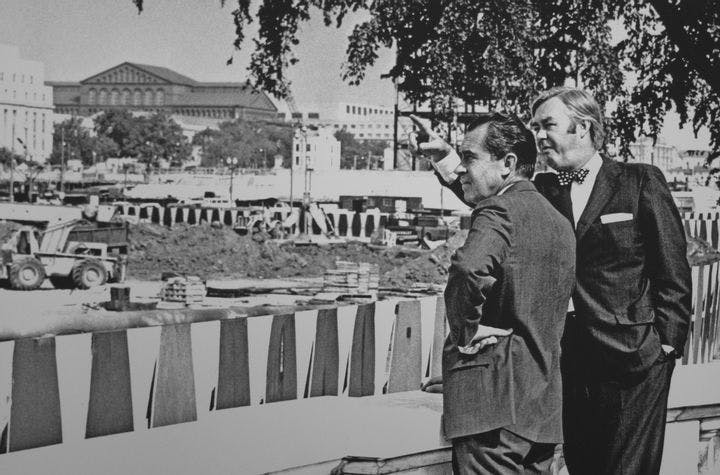Spring 2009
He Told Us So
– The Wilson Quarterly
A look back at Daniel Patrick Moynihan's 1965 report.
The late Daniel Patrick Moynihan strode through public life as a supremely influential sociologist, professor, ambassador, senator, and adviser to four presidents, but as an author he experienced a uniquely dark hour. It occurred not because he wrote badly, but too well. Buried in the subcabinet depths of the Labor Department and vying for President Lyndon B. Johnson’s attention in 1965, Moynihan summoned his most vivid prose to build a case for a public-works program to create jobs for all able-bodied black men.
Moynihan argued that the Civil Rights Act, passed a year earlier, was insufficient to overcome the black poverty that was the legacy of the “most awful” slavery the world had ever known. This inheritance had produced a “crisis” rooted in the “Negro American” family, a “tangle of pathology” characterized by illegitimate births and fatherless households. “The very essence of the male animal, from the bantam rooster to the four-star general, is to strut,” wrote Mohnihan. In a society that “measures a man by the size of his paycheck,” black men were deprived of jobs and their manliness.
When these and other passages of the so-called Moynihan Report were leaked to the press, the message was wrenched out of context and boiled down to a few sensational words: “humiliated” black males and family “pathology” caused by female-headed households. Moynihan was “pilloried not only as a racist, but a sexist to boot,” sociologists Douglas S. Massey of Princeton and Robert J. Sampson of Harvard write in their introduction to 12 scholarly articles in The Annals on the legacy of the report.
The leak had “entirely dysfunctional” consequences. The crucial moment for jobs legislation passed without significant action. Along with his purple prose, Moynihan’s sober facts were consigned to the realm of the politically incorrect. His erstwhile liberal friends branded him a bigot, President Johnson disowned the report, and scholars concluded that tackling “combustible racial issues” was dangerous. Researchers began to play up the strengths of the ghetto and the virtues of single motherhood, and to play down crime. The question of whether the behavior of poor people might contribute to their poverty became almost taboo, except among a generation of conservative scholars who linked it, not to slavery and joblessness, but to personal weaknesses and failings.
The Vietnam War began to consume the federal budget. Without money to help with black unemployment, government officials settled on the expedient of affirmative action, according to the authors. Then, when the economy faltered in the 1970s, affirmative action pitted aspiring blacks against working-class whites, creating a backlash against the civil rights movement and a conservative realignment in politics.
Moynihan’s core argument in that “prefeminist” era, say Massey and Sampson, was that whenever males lack reliable jobs, adequate wages, and access to social status, single parenthood will become more common, with terrible side effects on women and children. But such arguments were soon considered beyond the pale. As unemployment deepened in the 1970s and ’80s, national and state lawmakers responded, not with employment programs but with crackdowns on crime. By the early 2000s, more than one in three young black noncollege-educated men was in jail. Out-of-wedlock births, one-quarter of the total in the black community in 1965, had shot up to two-thirds. Economic inequality had increased, with the poorest 20 percent of the population becoming relatively poorer. Urban economies had changed as manufacturing declined and low- and semi-skilled introductory jobs disappeared. Poverty had become more concentrated in the inner cities.
Forty-four years after the Moynihan Report predicted that the “tangle of pathology” that created so many fatherless families would get worse unless the government acted, the “long-standing problems of poverty, segregation, discrimination, and family instability now unfold in a very different societal context,” which is characterized by hyper-inequality, mass incarceration, and large-scale immigration, even as many blacks have achieved success.
Toward the end of Moynihan’s life, lawmakers proposed tackling “family pathology” not with jobs programs but with federal benefits to promote marriage. Asked to comment, he said, “If you think a government program can restore marriage, you know more about the government than I do.”
THE SOURCE: “Moynihan Redux: Legacies and Lessons” by Douglas S. Massey and Robert J. Sampson, in The Annals of the American Academy of Political and Social Science, Jan. 2009.
Photo courtesy of Flickr/Cliff
